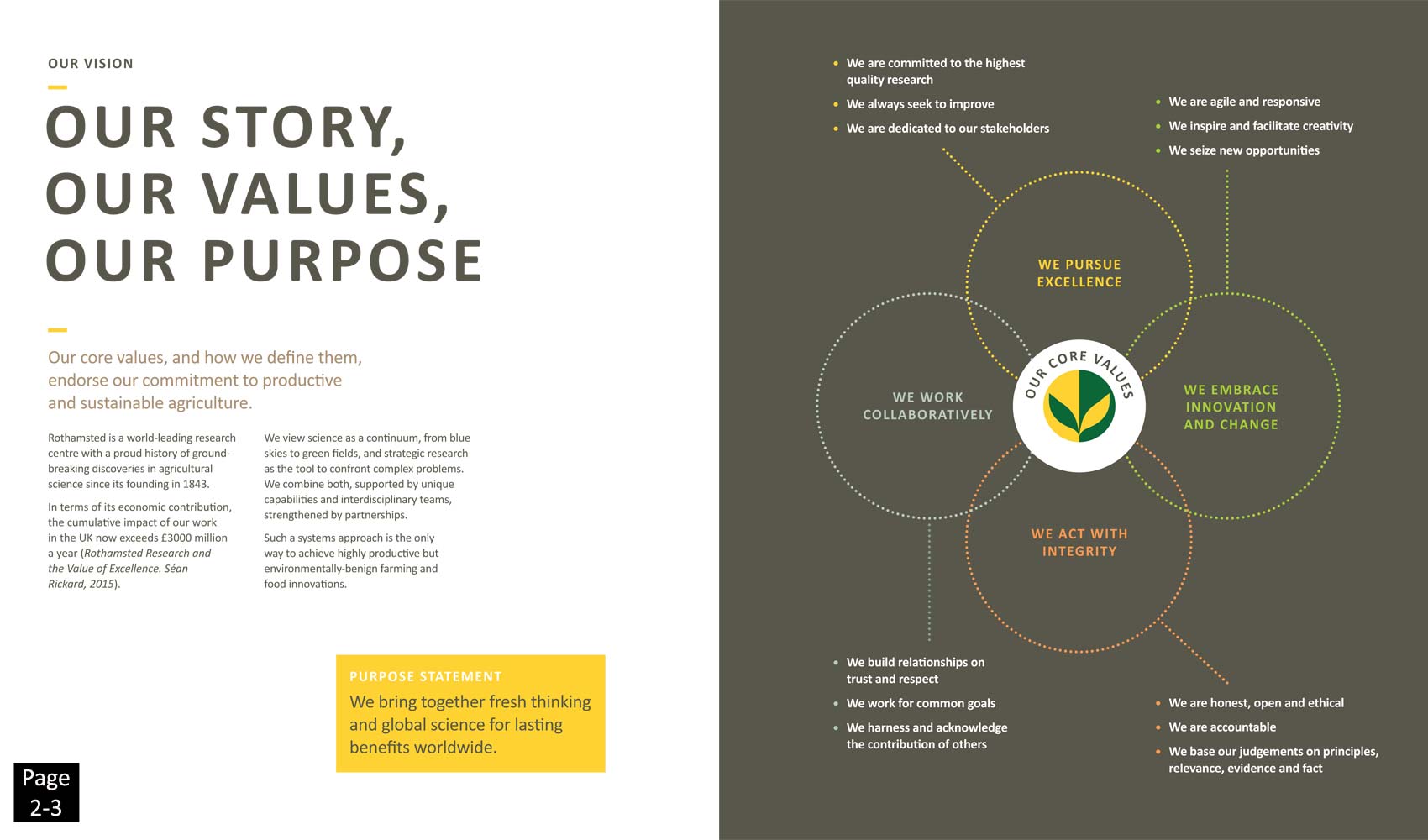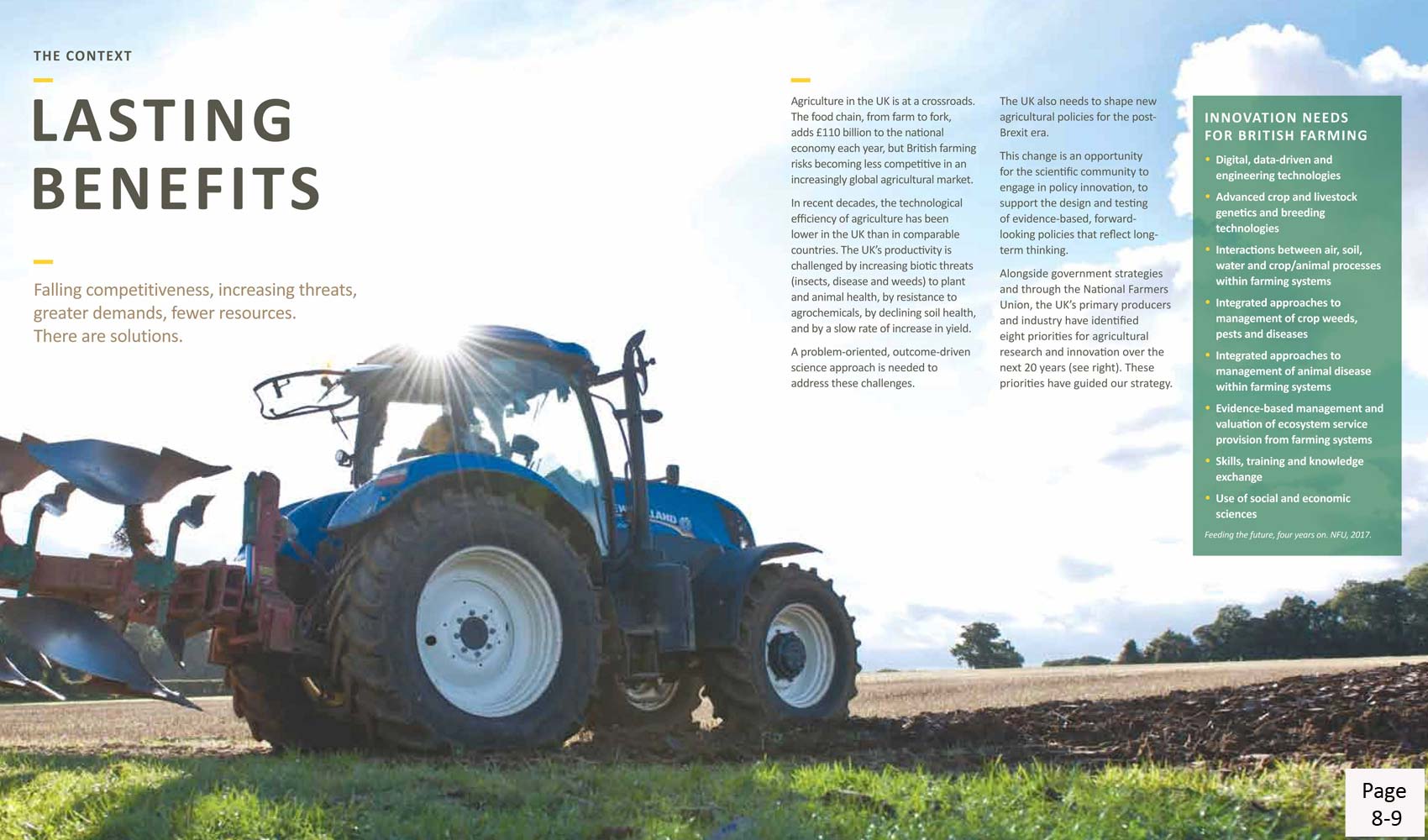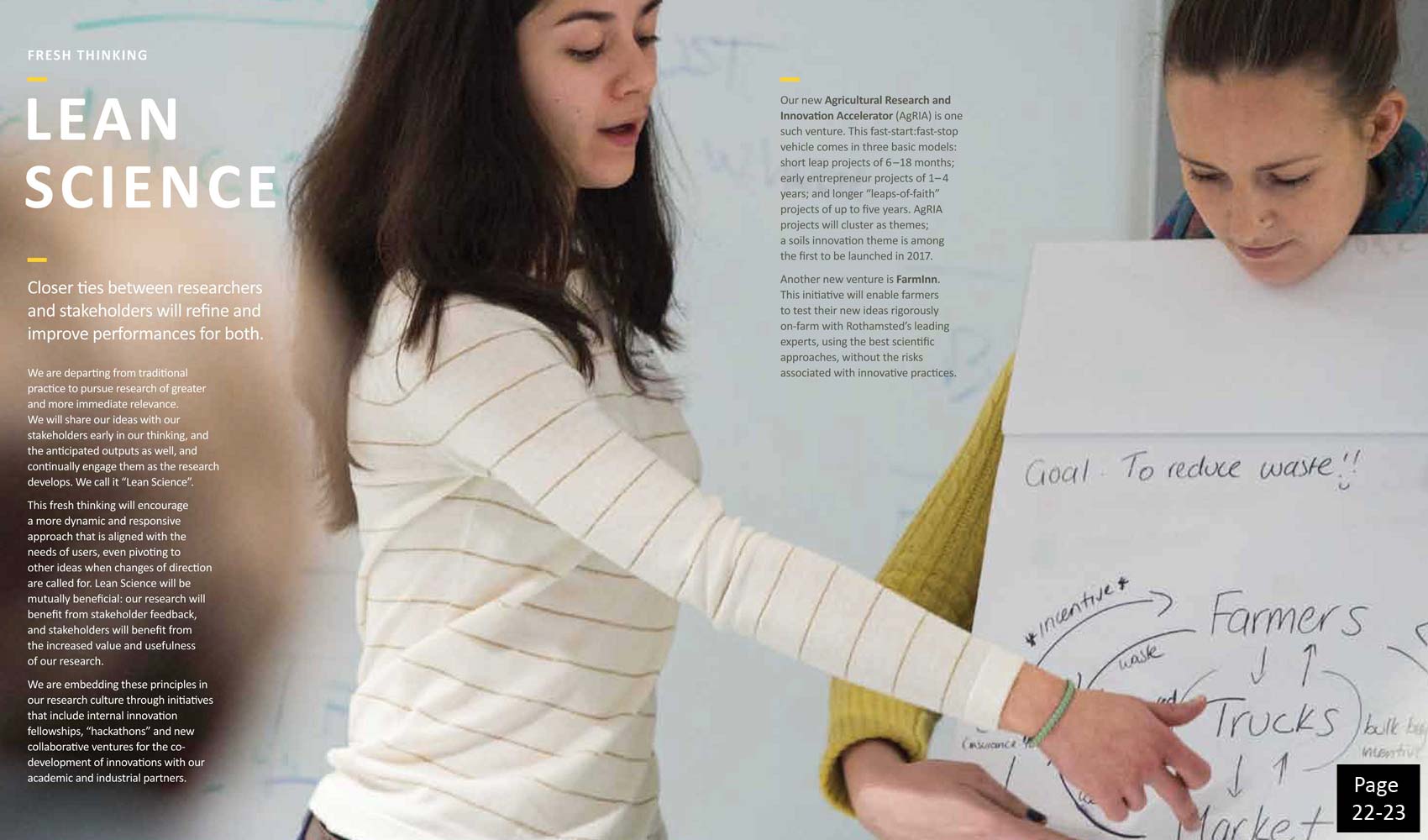The big picture: using wildflower strips for pest control
The first hard copies of our new five-year strategy have arrived at Rothamsted from the printers, and they are extraordinary. Though the content is of paramount importance, of course, I am excited by the style and what this says about our industry as a vital economic sector, writes Achim Dobermann.
We have access to some fabulous images of farming, from Britain and elsewhere, and early proofs of the report’s cover offered a range of options: wheat fields or livestock and grassland systems, traditionally managed landscapes, high tech cropping or sustainably maintained holdings.
In the end, we put those images inside and took the advice of our designer who was encouraging us to consider a radically different approach for the cover. Or so it seemed to me. While I’ve travelled the world for the past 30 years or so, I grew up in a small village where my family had farmed for at least half a millennium, which was as far back as we could trace.
The designer wanted a document that looked as fresh and as modern in 2020 and 2021 as it will this year and next. I resisted; I like those images. But he was right. The cover is modern, forward-looking and direct...it even glistens. What better way to promote our next five years, to 2022.
As a child and young adult, I worked on the family farm before deciding to become a scientist in agriculture. That’s my passion; agriculture for, essentially, the production of food. Over the intervening period, I have come to accept that things need to change.
I have come to realise that the many ways that we thought were the right ways of producing food and doing farming are, perhaps, not quite the right ways. We need to think more deeply not just about how we produce food, but also how we consume it and how we can hopefully do better in the future, knowing that we have a lot more people to feed. I feel that our latest strategy does that.

We have plotted a testing agenda of research programmes, diverse initiatives to engage with the producers and the public whom we serve, and business opportunities to get new ideas up and running quickly.
We have plotted a testing agenda of research programmes, diverse initiatives to engage with the producers and the public whom we serve, and business opportunities to get new ideas up and running quickly.
We aim to develop superior crops of greater nutritional and industrial value from fewer resources, to secure productivity with smarter solutions for containing the threats, and to design the next generation of food, from plants and animals, in more efficient, competitive and environmentally aware ways.
Furthermore, we are looking at how we can make our accumulated knowledge and expertise more relevant and accessible in practice, and also more tuneable to the immediate demands of farmers and consumers.

We are launching initiatives that, at one extreme, engage our potential customers in research projects as we plan and develop them; at the other, we are supporting innovation centres that are devising new agricultural technologies for livestock, for crop threats and for data collection.
We are also looking at that gap in the middle where applied research sits, between primary research and technological innovation, and where our scientists can work directly with farmers to test their ideas rapidly, an initiative we call FarmInn.
Farmers would test their ideas rigorously – on their own properties or on one of our experimental farms – with the support of our leading experts, using the best scientific approaches and without the risks associated with innovative practices. We are still trying to nail down adequate funding for the venture but are optimistic that we will do so.
Not only could ventures such as this one help to make British farming much more competitive, we could build on that secure foundation of knowledge and practice to consolidate our extensive international ties across every continent for the benefit of our stakeholders and farming everywhere.

What we now need is a government committed to farming, with a long-term vision for agriculture. We need a government that invests wisely and strategically, and provides funds for that important middle ground of applied research that brings the latest advances to farmers immediately.
In the meantime, please take a look at the strategy. The digital version is available online. Requests for a hard copy are welcomed; please email comms@rothamsted.ac.uk.
A version of this article appears in the current digital newsletter of Farm Business.